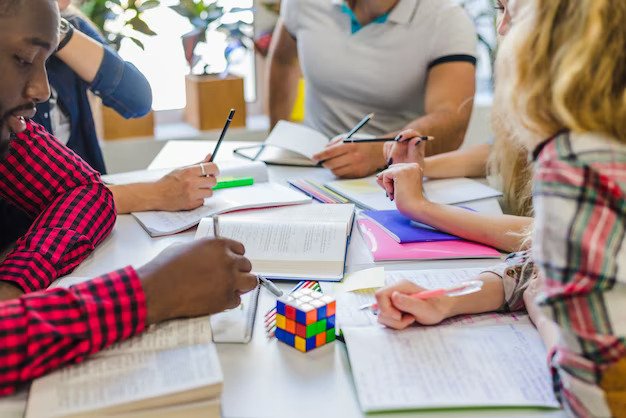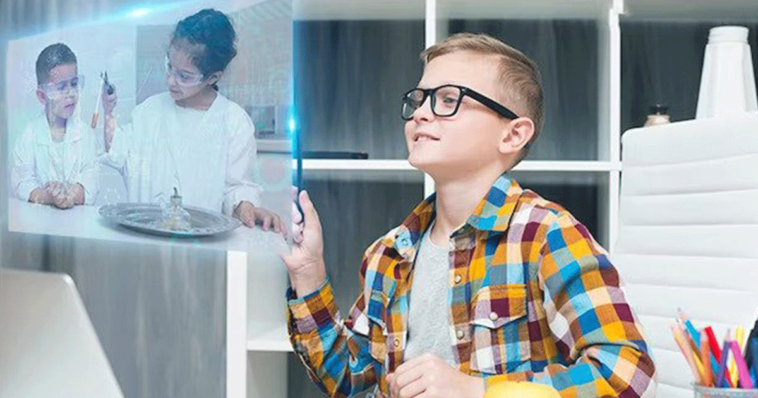Teaching Methods : The field of education is constantly evolving, driven by advancements in technology, changes in societal dynamics, and a growing understanding of effective pedagogy. As educators strive to create meaningful learning experiences, the quest to engage students in the learning process has become paramount. Gone are the days of rote memorization and passive lectures; today’s classrooms embrace innovative teaching methods that kindle curiosity, promote critical thinking, and foster a genuine passion for learning.
1. Experiential Learning
At the forefront of innovative teaching methods lies experiential learning. Rooted in the philosophy of learning by doing, this approach takes students beyond the confines of textbooks and lectures. Instead, it immerses them in real-world applications of knowledge, enabling a deeper understanding of concepts and their practical relevance. By actively engaging in hands-on experiences, students can grasp complex ideas more effectively, connecting theory with practice.
Experiential learning presents a myriad of benefits. It nurtures a sense of autonomy, as students take ownership of their learning journey. Additionally, it encourages problem-solving skills and adaptability, instilling in learners the ability to confront challenges with confidence and creativity.
2. Gamification In Education
Gamification in education introduces an element of fun and excitement into the learning process. By integrating game-like elements such as points, badges, and leaderboards, educators can motivate students to actively participate and excel in their studies. The competitive nature of gamification instills a sense of achievement and rewards progress, making the learning experience gratifying.
Moreover, gamified learning environments provide valuable data on student performance, enabling educators to tailor their teaching methods and address individual learning needs more effectively. The use of immersive storytelling and interactive challenges within educational games also enhances student engagement, creating an environment where learning becomes a captivating adventure.
3. Project-Based Learning

Project-based learning (PBL) emerges as an exceptional strategy for engaging students in their education. By framing learning around real-world projects and problems, students are encouraged to delve into topics that resonate with their interests. PBL empowers students to take charge of their learning, fostering a sense of responsibility and independence.
Working collaboratively on projects allows students to develop essential interpersonal skills, such as communication, teamwork, and negotiation. Moreover, as they tackle challenges and find solutions, they gain a deeper understanding of the subject matter and its practical applications. PBL culminates in tangible outcomes, creating a sense of accomplishment that traditional teaching methods may not offer.
4. Flipped Classroom Approach
The flipped classroom approach turns the traditional teaching model on its head. Instead of passively listening to lectures during class time, students engage with pre-recorded video lectures or other learning materials outside of school hours. This approach empowers learners to pace their own learning, allowing them to review content as needed and come to class with questions and ready for discussion.
Classroom time is then transformed into a hub of active learning. Educators facilitate discussions, group activities, and problem-solving exercises, providing students with personalized attention and guidance. The flipped classroom approach nurtures deeper comprehension, as students engage with the material more actively and interact with their peers and instructors more meaningfully.
5. Inquiry-Based Learning
Inquiry-based learning sparks the flame of curiosity within students. Instead of providing straightforward answers, educators encourage learners to ask questions, investigate, and explore topics of interest. This approach cultivates critical thinking abilities, as students learn to analyze information, evaluate evidence, and form conclusions.
As learners become more adept at questioning and seeking answers independently, they develop a lifelong love for learning. Moreover, inquiry-based learning fosters a sense of ownership over knowledge, motivating students to take charge of their education actively.
6. Use Of Technology In Education

The integration of technology in education has revolutionized the learning landscape. Digital tools, interactive software, and online resources provide dynamic learning experiences that cater to various learning styles. By incorporating multimedia elements, such as videos, simulations, and interactive quizzes, educators can create engaging lessons that captivate students’ attention.
Virtual reality (VR) and augmented reality (AR) bring abstract concepts to life, offering immersive experiences that bridge the gap between theory and practice. Additionally, blended learning environments, which combine traditional classroom instruction with online components, allow for flexible and personalized learning experiences.
7. Collaborative Learning Strategies
Collaborative learning strategies harness the power of group dynamics. By engaging in group projects, discussions, and activities, students learn to communicate effectively, negotiate ideas, and work as part of a team. This approach not only enhances social skills but also fosters a sense of community within the classroom.
Peer teaching and mentoring are integral components of collaborative learning. When students take on the role of teachers, they reinforce their understanding of the material while helping their peers grasp complex concepts. Such interactions create a supportive and inclusive learning environment, promoting a positive learning experience for all.
8. Creative Arts Integration
Incorporating creative arts into various subjects infuses education with imagination and originality. By integrating music, visual arts, drama, and literature into lessons, educators cater to diverse learning styles and tap into students’ creativity. Creative expression provides an outlet for emotional exploration and empathy, allowing learners to connect with different perspectives and cultures.
Furthermore, arts integration nurtures innovation and problem-solving skills, as students learn to think outside the box and approach challenges from unique angles. The marriage of arts and academics sparks enthusiasm for learning and paves the way for well-rounded individuals.
9. Mindfulness And Meditation In The Classroom

In the pursuit of academic excellence, the emotional well-being of students should not be overlooked. Mindfulness and meditation practices have gained recognition as powerful tools to cultivate focus, reduce stress, and promote overall well-being.
By incorporating brief moments of mindfulness into daily routines, educators can help students manage stress, improve concentration, and enhance self-awareness. Implementing mindfulness techniques during exams or stressful periods can alleviate anxiety and create a conducive environment for learning.
10. Culturally Relevant Teaching
Recognizing the diversity present in classrooms today, culturally relevant teaching aims to make education inclusive and empowering for all students. This approach acknowledges and celebrates students’ diverse backgrounds, embedding their culture and experiences into the curriculum.
Culturally relevant teaching materials and methods resonate with learners, as they can see themselves represented in the learning process. This fosters a sense of belonging and encourages students to embrace their unique identities, strengthening their motivation to excel academically.
Conclusion
Innovative teaching methods have the power to transform education, making it engaging, relevant, and meaningful for students. From experiential learning to outdoor adventures, these methods cater to diverse learning styles, fostering curiosity, critical thinking, and a lifelong passion for learning. As educators continue to explore new horizons, the journey towards effective education becomes a collective endeavor, shaping the minds of future generations and empowering them to create a better world.
Also Read : 10 Ways To Foster Creativity In The Classroom
Source Image : Freepik.com





